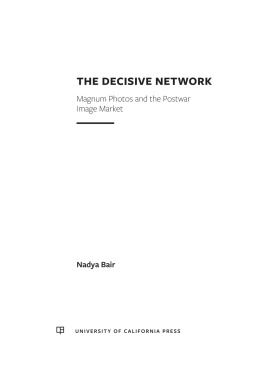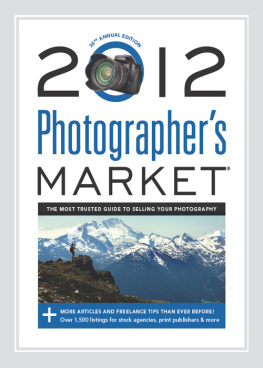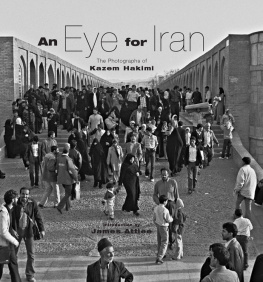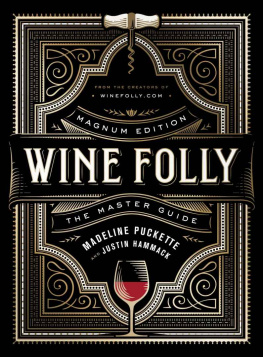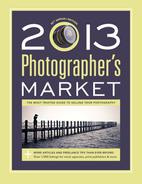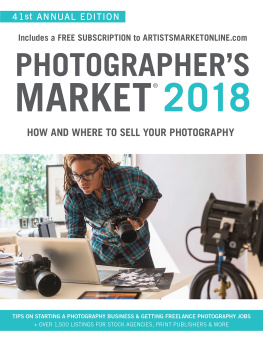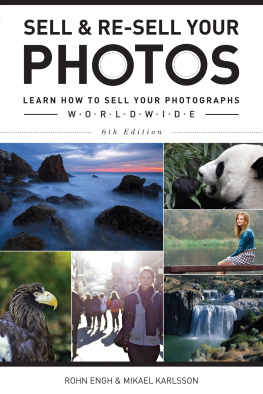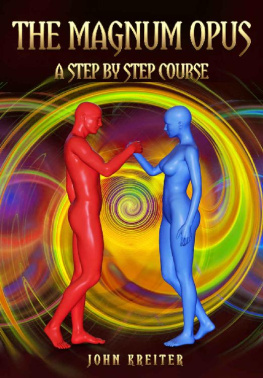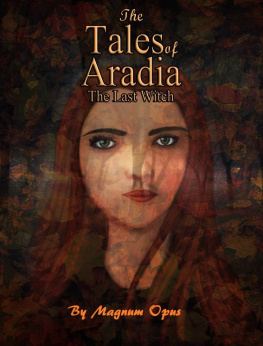ACKNOWLEDGMENTS
NOBODY CAN COMMIT PHOTOGRAPHY alone, wrote Marshall McLuhan, and the same goes for writing a book. This one certainly would not have been possible without the support of many individuals and institutions. I began this project at the University of Southern California, where a Provosts Fellowship and funding from the Department of Art History, the Science and Technology Research Cluster, and the Visual Studies Research Institute allowed me to travel to archives. A Mellon Foundation/American Council on Learned Societies Dissertation Completion Fellowship supported my last year of writing away from Los Angeles. Since then, the Ryerson Image Centre, the Center for Creative Photography, Yale University, and a Getty/ACLS Postdoctoral Fellowship in the History of Art supported new research and gave me the time and resources to revise the dissertation into a book.
I feel fortunate to have met a number of people who were involved in early Magnum and who are continuing to shape its legacy today. In Paris, John G. Morris entrusted me with his copy of the Magnum archive after our first meeting, and he encouraged me to travel to the University of Chicago to see the rest of his papers. I am sorry that he passed away before this books completion. Inge Bondi welcomed me at her home in Princeton. She shared memories, happily answered emails, and gave me copies of valuable documents from her archive. Ruth Hartmann graciously accommodated me at her home in New York and has helped me navigate Erich Hartmanns archives and legacy on multiple occasions. In England, Jinx Rodger gave me unimpeded access to her and George Rodgers papers and was terrific company during my time in Smarden. In Israel, Micha and Orna Bar-Am shared memories of Cornell Capa and their association with Magnum before and after 1967. I thank Noam Gal at the Israel Museum and Ruth Iskin at Ben Gurion University for facilitating our meeting and for their encouragement as I immersed myself in Israeli photography and visual culture. Elliott Erwitt patiently answered my questions while Mio Nakamura tracked down all of the materials I wanted to see. Yukiko Lanois graciously answered many questions about her work in the Black Star picture library, and I am grateful to Paul Roth for the introduction. And in Desert Hot Springs, Phil Gittelman shared his experiences at Magnum Films.
The Magnum Foundation let me into its archive when it was still housed in a public storage closet in Chelsea. My foremost thanks to Susan Meiselas, as well as Kristen Lubben, Ryan Buckley, and Kate Phillips for facilitating my research. John Jacob kindly allowed me to work in Inge Moraths papers as they were being packed up for their move to Yale, while Marco Bischof shared digital copies of his fathers archive. At the International Center of Photography, I benefited from the guidance of Maya Benton, Mathew Carson, Emily Dunne, Claartje van Dijk, and Cynthia Young. Aude Raimbault and Agnes Sire welcomed me at the Fondation Henri Cartier-Bresson and provided me with additional research assistance when I could not get back to Paris. Leslie Squyres shepherded me through nearly a dozen collections at the Center for Creative Photography while Emily Weirich happily shared her knowledge of digital humanities methods. Daniel Goldstein and Jenny Hodge at UC Daviss Shields Library helped me track down and later reproduce pages from Holiday magazine. I am also grateful for the help of staff at the Beinecke Rare Book and Manuscript Library at Yale University; the Rare Books and Manuscript Library at Columbia University; the Harry Ransom Center at the University of Texas at Austin; the Getty Research Institute; the Museum of Modern Art Archives; the Archives and Special Collections at the University of Louisville; the Smithsonian Institution Archives; the National Archives and Records Administration; the New York Historical Society; and the USC Libraries. For help arranging the rights to Magnums images, I thank Michael Shulman and Pauline Vermar.
I thank Thierry Gervais, Charlene Heath, Paul Roth, and Galle Morel for welcoming me at the Ryerson Image Centre and for helping me think more deeply about the work of photo agencies through my research into Black Star. My time at Yale allowed me crystallize my thoughts on Magnums archive and the role of its staff. I am grateful to Laura Wexler for her mentorship, and to the Digital Humanities Lab team for their enthusiastic collaboration on a digital project that improved this books structure and arguments: Catherine DeRose, Douglas Duhaime, Peter Leonard, and especially Monica Ong Reed, who turned my ideas into custom visualizations and contributed a number of illustrations to this book. Eliyahu Stern welcomed me into Yales Jewish Studies writing group and together with Allyson Gonzalez, Adam Stern, and Gabor Toth offered wise suggestions on my chapter on Life magazine.
Colleagues far and wide helped me make sense of my research. I am grateful for invitations to share work in progress at Hunter College, the Maison Franaise in Oxford, the New York Public Library, the Princeton Art Museum, the Ryerson Image Center, the Rocky Mountain Interdisciplinary History Conference, the Smithsonian American Art Museum, the University of Saint Thomas, the University of Vienna, the Photographic Memory Workshop at Yale University, York University, and the annual meetings of the College Art Association and the Association for Jewish Studies. A number of the ideas in this book were first developed in articles, including Never Alone: Photo Editing and Collaboration, in Getting the Picture: The Visual Culture of the News, edited by Jason E. Hill and Vanessa Schwartz (New York: Bloomsbury, 2015); The Decisive Network: Producing Henri Cartier-Bresson at Mid-Century, History of Photography 40, no. 2 (May 2016); Their Daily Bread: American Sponsorship and Magnum Photos Global Network, American Art 31, no. 2 (Summer 2017); From Antifascism to Humanism: The Legacies of Robert Capas Spanish Civil War Photography, in Visualizing Fascism, edited by Geoff Eley and Julia Adney Thomas (Durham: Duke University Press, 2020, forthcoming); and Photo Essays at Life, in LIFE Magazine and the Power of Photography, edited by Katherine Bussard and Kristen Gresh (New Haven: Yale University Press, 2020, forthcoming). I thank the editors, publishers, and reviewers for their insightful comments and enthusiastic support.
I benefited from many fruitful conversations with Deborah Achtenberg, Stuart Alexander, Estelle Blaschke, Monica Bravo, A. D. Coleman, Rachel Deblinger, Dennis Dworkin, Kristen Gresh, Steven Hoelscher, Brian Jacobson, Vincent Lavoie, Marion Krammer, Kelly Midori McCormick, Mary Panzer, Antonella Pelizarri, Sam Spinner, Sally Stein, Margarethe Szeless, Jennifer Tucker, Nicholas Underwood, Brian Wallace, Carol Zemel, and Andrs Mario Zervign. Michael Leja, David Lubin, Alexander Nemerov, and Fred Turner offered encouragement and guidance on the craft of writing. Jason Hill was always happy to mull over ideas and delight in print media. Catherine Clark has been a generous interlocutor, steadfast editor, and dedicated friend. Her comments on this manuscript were invaluable in making it cohere as a book. That I became a historian of photography is in large part due to David Shneer. He has been an ally, critic, reader, collaborator, and friend for over a decade, and I thank him for every lesson about work and life.
At USC I learned a great deal from Daniela Bleichmar, Kate Flint, Suzanne Hudson, Mia Mizuta, Karen Lang, and Paul Lerner. Students in the art history department and the Visual Studies Research Institute helped me think more deeply while offering terrific friendship: Sam Adams, Jonathan Dentler, Matthew Fox-Amato, Rika Hiro, Megan Mastroianni, Bess Murphy, Aaron Rich, Steven Samols, MacKenzie Stevens, Lana Swartz, Kay Wells, and above all Brendan McMahon and Lida Sunderland. I am indebted to members of the Visual Studies and Cinema Studies writing group for reading key chapters early on: Umayyah Cable, Samantha Carrick, Allison Kozberg, Ellen Macfarlane, C.C. Marsh, Luci Marzola, Joshua Mitchell, Kate Page-Lippsmeyer, Roxanne Samer, Lana Swartz, and Stephanie Sparling Williams, and especially Laura Serna and Jennifer Greenhill, who offered leadership and guidance. My committee members Megan Luke and Richard Meyer offered profound insights into the art of looking at and writing about photography.

